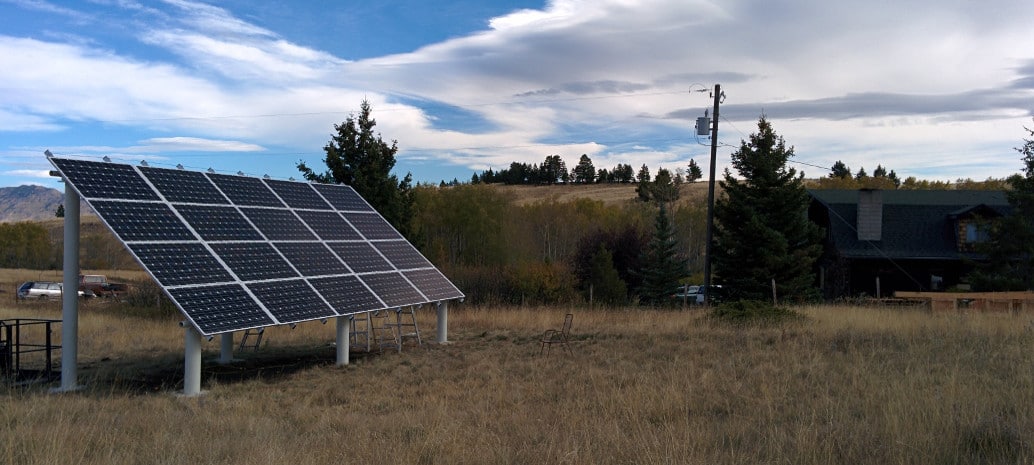In recent years, the Public Utilities Regulatory Power Act of 1978 (PURPA) has emerged as a major driver for the U.S. utility-scale solar market, and this year is expected to be the biggest driver for large solar projects in the nation. However, PURPA is implemented at the state level, with some big differences.
In practice, this means that some states are ripe for solar under PURPA, and others are not. And some states that were favorable in the past may not be so in the future.
A telling example of this is Montana, which late last week gutted implementation of PURPA in the territory of utility NorthWestern Energy. After abruptly suspending the law a year ago, the state’s Public Service Commission (PSC) has now made several changes to implementation. Some of these will be damning for future development of solar, as well as those projects which were caught in regulatory limbo.
In a novel move, regulators have approved three payment rates for “qualifying facilities” (QF) under PURPA, one for peak electricity usage and one for off-peak, with a further rate for times or particularly high demand. All of these are significant reductions from previous rates.
Under the new rules, utilities must pay projects 100 kW to 3 MW in capacity $32 per megawatt-hour (MWh) for electricity generated during times of peak usage and $23/MWh during off-peak hours. During certain hours during five winter and spring months the rate increases by $9/MWh.
As if to add insult to injury, the capacity portion that solar delivers – in other words, its contribution to meeting peak demand – the regulators put at only 6% of rated capacity. When all of this and carbon credits are added in, solar projects will be paid $47/MWh – 30% less than the previous rate of $67/MWh.
For new contracts, these rates will be re-calculated every two years.
But far more damning is the change to contract lengths. Going even farther than the staff recommendation, the Montana PSC slashed PURPA contract lengths from 25 to 10 years, but these effectively will only last five years, as the rates paid will be recalculated halfway through. While this is not as extreme as the two years that Idaho reduced contracts to, it is still far too short a time period to deliver any degree of investor certainty.
“It’s still not going to pencil out economically,” argues Vote Solar Regulator Director Ed Smeloff, who has been involved in this proceeding for the last year.
In defending his decision to radically alter PURPA implementation and effectively destroy the local solar market, Commissioner Roger Koopman (R-Bozeman) argued that he was establishing a “level playing field”.
“It’s not the role of the Commission to guarantee anyone’s business success,” stated Koopman. “Nor is our job to pick favorites in the energy field. It is our job to maintain a level playing field that is fair to both the ratepayer and energy entrepreneurs.”
However, Koopman’s statement implies that he disagrees with PURPA itself, and is acting accordingly. “Current long-term, fixed rate contracts discriminate against the consumer, with the ratepayer bearing all the risks. That’s profoundly unfair and beginning today we need to start fixing it.”
If there is a sliver of justice in the PSC’s decision, it is that projects owned by the utility and by independent developers will be treated the same. Additionally, projects which had valid interconnection agreements will still go forward under the previous rate of $67/MWh. Vote Solar’s Smeloff estimates that this represents around 150 MW of solar projects, leaving another 200 MW the option of taking the reduced rates and contract lengths or quitting altogether.
An irony to these drastic actions is that Montana did not have much solar capacity to begin with. The state had the 39th-largest market among 40 states tracked by GTM Research and Solar Energy Industries Association (SEIA) in 2016. With its current regulatory environment, this won’t be changing any time soon.
“This is basically saying to solar companies: Don’t come to Montana. We are not open for business,” notes Vote Solar’s Smeloff.
Vote Solar says that it is currently considering a legal challenge to the ruling, but is waiting for the final text of the ruling to come out and to consult with its local partners before making a final decision.
Update: Several corrections were made to this article at 6 PM Eastern Time on June 26, 2017. An earlier version of this article gave only the rates provided by a PSC press release, and compared these to the previous QF tariff of $67/MWh. However, solar projects are subject to additional compensation, as revealed in a staff memo obtained by pv magazine. The more full accounting of the QF rate for solar projects has been included in the latest version of this article, and we regret the error. Additionally comments by Vote Solar have been included.
This content is protected by copyright and may not be reused. If you want to cooperate with us and would like to reuse some of our content, please contact: editors@pv-magazine.com.









For reals…..what is wrong with these people?
It’s not realistic to expect every state to act as if there were a price on carbon. Many do despite the lack of federal leadership while others make semi-cogent arguments about the need for “protecting ratepayers.” Smeloff is right–private capital and investment will go to states with open policy and regulatory arms and for now Montana is closed for business.